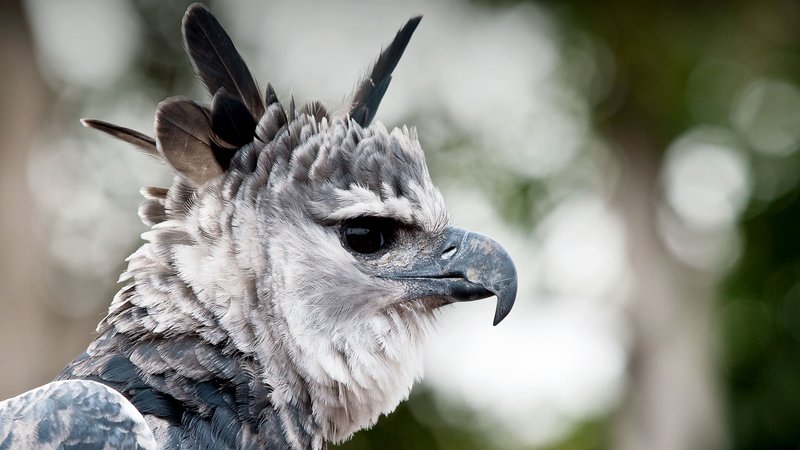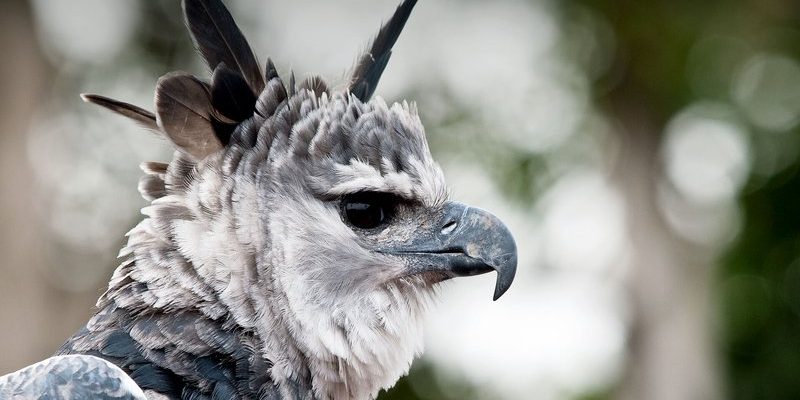
The Harpy Eagle is not just a pretty face in the avian world; it’s a crucial part of its ecosystem, often found in tropical rainforests across Central and South America. Its diet primarily consists of medium-sized mammals and birds, which means it plays a vital role in controlling these populations. Sadly, like many species, it faces challenges that threaten its existence. Understanding these threats helps us appreciate why conservation is so important, not just for the Harpy Eagle, but for our environment as a whole.
What Is the Status of the Harpy Eagle?
The Harpy Eagle is classified as *near threatened* according to the International Union for Conservation of Nature (IUCN). This classification means that while the species is not currently at immediate risk of extinction, it is close enough that it could become endangered if current threats continue. The IUCN status is not something to take lightly—it’s a warning bell that we need to pay attention to.
In the wild, Harpy Eagles can live up to 35 years. They’re solitary birds, relying heavily on their vast territories to thrive. However, their population is decreasing due to habitat loss and hunting. We must address these issues to ensure their survival. If we don’t, we might find ourselves looking at pictures of these magnificent creatures instead of seeing them flying in the wild.
Habitat Loss and Its Effects
One of the biggest threats to the Harpy Eagle is habitat loss. As humans clear forests for agriculture, logging, and urban development, these birds lose their homes. Imagine living in a beautiful treehouse and suddenly finding out that the trees are being cut down for a new shopping mall. That’s what’s happening to the Harpy Eagles.
Their nesting sites are typically found in tall, mature trees that provide the perfect vantage point for hunting. When these trees are removed, not only do the eagles lose their homes, but their hunting grounds are also diminished. Deforestation is like pulling the rug out from under them. Without adequate breeding and feeding areas, their populations struggle to survive.
Impact of Deforestation
Deforestation doesn’t just mean fewer trees; it also disrupts the entire ecosystem. When trees are cut down, many plants and animals that depend on those trees also suffer. This can lead to an imbalance in the ecosystem, affecting not only the Harpy Eagle but other species too.
In some areas, illegal logging isn’t just damaging the trees; it’s also breaking laws that protect these eagles and their environment. As these forests disappear, the Harpy Eagle’s ability to thrive and reproduce diminishes.
Hunting and Persecution
Another significant threat is hunting and persecution. In some regions, Harpy Eagles are regarded as pests. Local farmers may see them as a threat to their livestock, especially smaller animals like goats or young calves. This is a misunderstanding, as Harpy Eagles primarily hunt other wildlife, often opting for monkeys and sloths, not livestock.
When people feel threatened, they might take drastic actions to protect their property, which can include illegal hunting. This leads to a decline in the eagle population, worsening their conservation status. Addressing these misconceptions is crucial for the Harpy Eagle’s survival, as education plays a significant role in changing attitudes towards these magnificent birds.
Community Involvement in Conservation
Efforts to educate local communities about the importance of Harpy Eagles can significantly reduce persecution. Initiatives that involve local residents in conservation efforts often prove effective. When people understand the role these birds play in the ecosystem, they are more likely to protect them. There are success stories where local communities have embraced conservation, turning potential threats into allies.
Conservation Efforts
Conservation programs are crucial for helping the Harpy Eagle recover. Many organizations focus on habitat preservation, protecting nesting sites, and reducing human-wildlife conflict. These efforts are similar to planting seeds to grow a healthy garden; they take time and care but can lead to thriving populations.
In some areas, protected reserves have been established to ensure Harpy Eagles have safe spaces to breed and hunt. These reserves not only benefit the eagles but also help preserve the broader ecosystem. Conservation isn’t just about saving one species; it’s about maintaining the health of our planet.
Success Stories in Conservation
There are inspiring examples of successful conservation efforts. In certain regions, reforestation projects have led to a rebound in Harpy Eagle populations. Communities that engage in such initiatives often see not only wildlife benefits but also economic opportunities, like eco-tourism.
When local people see the value of their natural environment, they become empowered to protect it. This shift can make a world of difference for the Harpy Eagle and countless other species.
What You Can Do to Help
You might be wondering, “What can I do to help the Harpy Eagle?” Fortunately, you don’t need to be a conservationist to make a difference. Here are a few simple actions you can take:
- Support conservation organizations: Donating or volunteering can help fund important projects.
- Spread awareness: Talk to friends and family about the importance of protecting wildlife.
- Reduce paper usage: Since deforestation is a major threat, reducing your paper consumption can help lessen demand.
- Participate in local conservation efforts: Join or support local groups focused on habitat preservation.
Every little action counts, and together we can create a brighter future for the Harpy Eagle.
The Harpy Eagle is a stunning example of nature’s beauty and complexity, but it’s also a reminder of the fragility of our ecosystems. While it’s currently classified as *near threatened*, the continued loss of habitat and human persecution puts it at risk. By understanding the challenges facing these majestic birds and taking action, we can help ensure that future generations will see them soaring through the skies.
Let’s rally together—whether through education, advocacy, or conservation—because every effort contributes to a healthier planet. Remember, the story of the Harpy Eagle isn’t just about one bird; it’s about all of us and the world we share.

